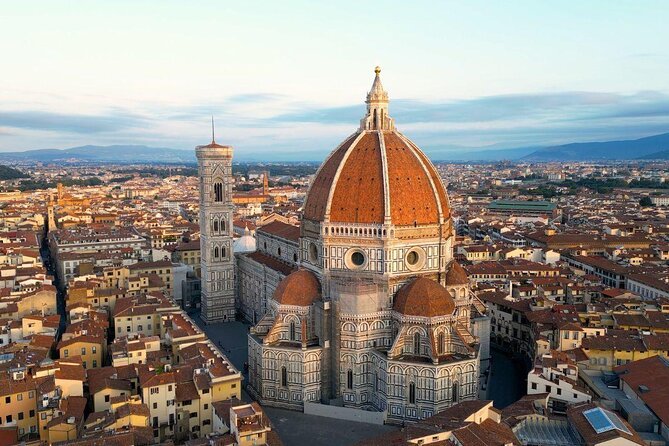
Florence Duomo in Italy
The Cathedral of Santa Maria del Fiore, commonly known as the Duomo, stands as a testament to Florence's rich history and architectural brilliance. This iconic structure, with its stunning red-tiled dome, dominates the city's skyline and attracts millions of visitors each year. Here's a comprehensive guide to exploring this masterpiece.
Historical Background
The construction of the Duomo began in 1296 and spanned over 140 years, involving several prominent architects. The initial design was by Arnolfo di Cambio, but the most famous contribution came from Filippo Brunelleschi, who engineered the magnificent dome, completed in 1436. The cathedral itself was consecrated on March 25, 1436, by Pope Eugene IV.
Architectural Highlights
Exterior
The exterior of the Duomo is a visual feast, adorned with intricate Gothic details. The façade, completed in the 19th century by Emilio De Fabris, features polychrome marble panels in shades of green, pink, and white. The richly decorated façade showcases statues, intricate patterns, and religious scenes, making it a true work of art.
The Dome
Brunelleschi's dome is an architectural marvel. It was the largest of its time and remains the largest masonry dome in the world. Visitors can climb the 463 steps to the top, where they can admire the ingenious double-shell construction and get unparalleled views of Florence. The climb also allows a close-up view of Giorgio Vasari's frescoes of the Last Judgment, which adorn the interior of the dome.
Giotto's Campanile
Adjacent to the Duomo is Giotto's Campanile, a striking bell tower designed by Giotto di Bondone. Standing at 85 meters tall, the tower offers another opportunity for panoramic views of the city. The climb involves 414 steps, passing by intricate sculptures and reliefs that decorate the tower.
The Baptistery of San Giovanni
In front of the Duomo is the Baptistery of San Giovanni, one of the oldest buildings in Florence. Famous for its bronze doors, particularly Lorenzo Ghiberti's "Gates of Paradise," the octagonal baptistery boasts stunning mosaics on its ceiling, depicting biblical scenes.
Interior
Inside the Duomo, the vast nave is striking in its simplicity compared to the ornate exterior. Key highlights include the clock above the entrance, designed by Paolo Uccello, and the intricate marble floors. The interior houses numerous artworks, including stained glass windows by artists like Donatello and Andrea del Castagno.
Visiting Tips
Opening Hours: The Duomo is open from 10:00 AM to 4:30 PM on weekdays, with slightly shorter hours on weekends and holidays.
Tickets&Tours: While entry to the cathedral is free, climbing the dome, Giotto's Campanile, and visiting the Baptistery requires a ticket.
Dress Code: Modest attire is required; shoulders and knees should be covered.
Best Time to Visit: Early morning or late afternoon to avoid crowds and enjoy the best light for photography.
Conclusion
The Duomo is not just a religious site but a symbol of Florence's artistic and architectural heritage. Each element, from the grand dome to the intricate façade, tells a story of innovation and devotion. Whether you're an art enthusiast, history buff, or casual traveler, a visit to the Duomo is an unforgettable experience that captures the essence of Florence.




